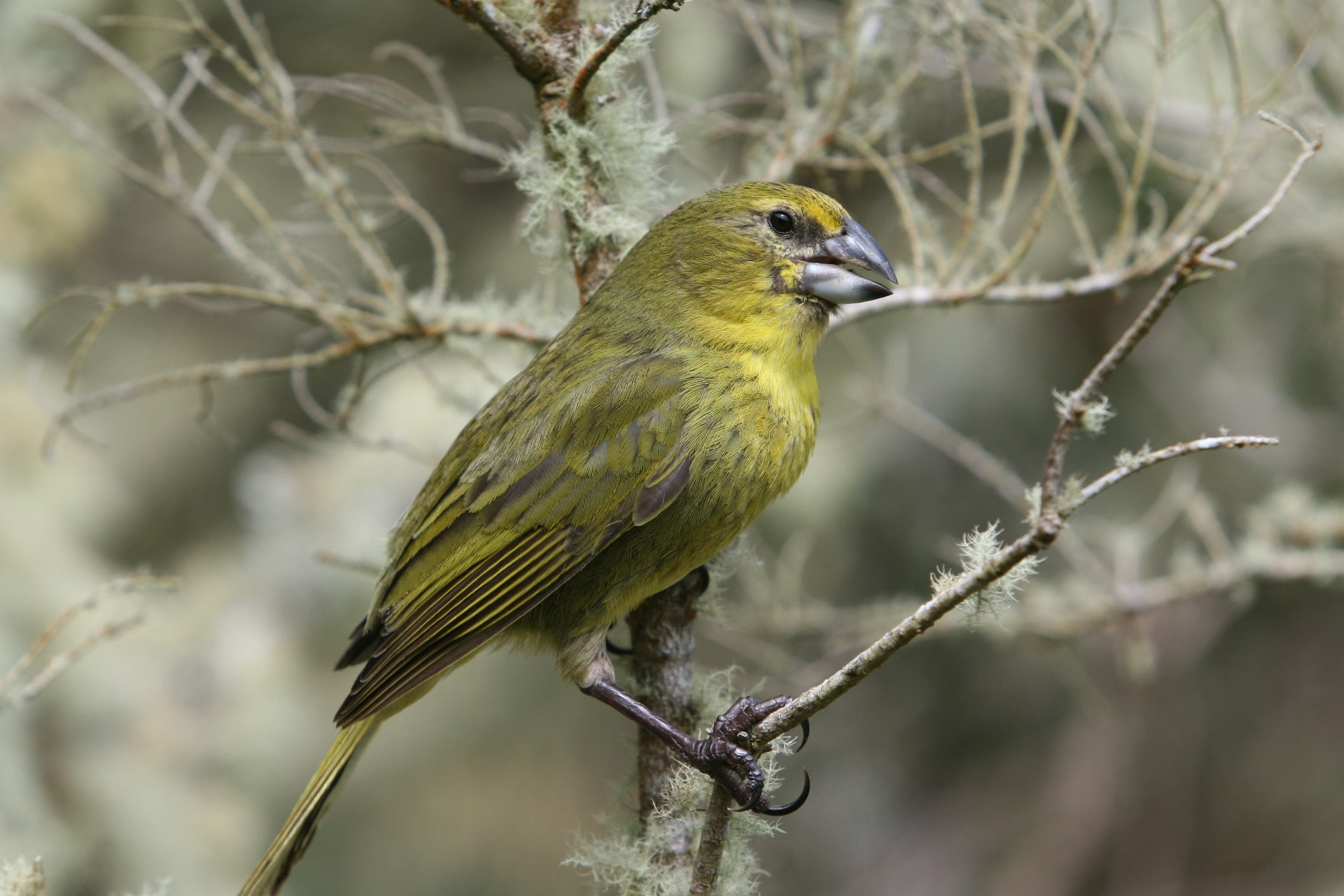Remote island bird at risk of extinction is thrown lifeline by parasitic wasp
Conservationists have introduced a wasp to tackle an invasive scale insect destroying forest habitat of the critically-endangered Wilkins’ bunting.

A rare bird found only on a remote island in the South Atlantic is receiving help to stave off extinction from a parasitic wasp, conservationists said.
The critically-endangered Wilkins’ bunting is endemic to Nightingale Island, part of the Tristan da Cunha group of islands, where it feeds on the fruit of the island’s only native tree, the Phylica arborea.
But an infestation of an invasive scale insect, accidentally introduced into the island, has been devastating the forest, which was also hit by huge storms in 2019, putting the Wilkins’ bunting at risk of extinction.
Surveys in 2017 found there were only 120 breeding pairs of the birds remaining.
So conservationists embarked on a biological control project, using a small parasitic wasp Microterys nietneri that was found to be successful in controlling the scale insect, without having adverse impacts on other species.
The project, by wildlife charity RSPB, environmental and agriculture science experts CABI and FERA, and the Tristan da Cunha Government, has also focused on setting up a tree nursery to boost the number of fruiting trees and improve the island’s biosecurity to avoid similar occurrences in the future.
The scale insects feeding on Phylica arborea, a shrub or small tree with needle-like leaves and white flowers, secrete honeydew, which encourages a sooty mould on branches, stopping them photosynthesising, weakening and eventually killing the tree.
Trevor Glass, head of Tristan Conservation Department, said: “We hadn’t realised quite how damaging the scale insects were on Tristan, affecting many plants as well as Phylica.
“No one knew what a scale insect was before this project, but the community are now very aware of them.”
Dr Norbert Maczey, an entomologist at CABI, said the first wasps faced an “epic journey” to reach their destination, firstly a flight from London to Cape Town, in a cool bag followed by an enforced stay in a hotel room as part of a staff member’s Covid quarantine.
Then there was a week-long journey to Tristan with temperatures sometimes dropping below zero and a further boat trip to Nightingale Island, but despite the conditions some of the wasps survived, he said.
The first release in April 2021 was followed by further releases of the wasp – which lays eggs that develop inside the scale insect and killing it – over the next two years, some of which were successful.
“Despite the weather on Tristan frequently being cold, wet and windy, the wasps established surprisingly quickly, parasitism rates of the scale insects are currently high, and the trees are already showing signs of recovery,” Dr Maczey said.
And there have been positive signs for the rare birds as a result: surveys in February showed that despite losing approximately 80% of the forest, Nightingale Island still has an estimated 60-90 pairs of Wilkins’ bunting.
Forest recovery and replanting due to the project is likely to have helped halt declines in the population, according to the conservationists, who say that controlling the scale insect means bunting numbers should stabilise and will have a chance to recover.
David Kinchin-Smith, the RSPB’s UK Overseas Territories project manager, said: “This project shows what can be achieved in turning around the fate of a threatened species.
“Steely determination, ecological expertise and a large helping of luck have all contributed to the success of this work, but hopefully we, and the wasps, have given the buntings a much-needed lifeline.”
Bookmark popover
Removed from bookmarks